
20.07.2020
Through film analysis and a review of science fiction, artist and curator Gala Berger wonders about the paradoxes involved in museums as a safeguard of history in view of the end of the world: where colonial, patriarchal, racist and binary structures sublimate the politics of objects.
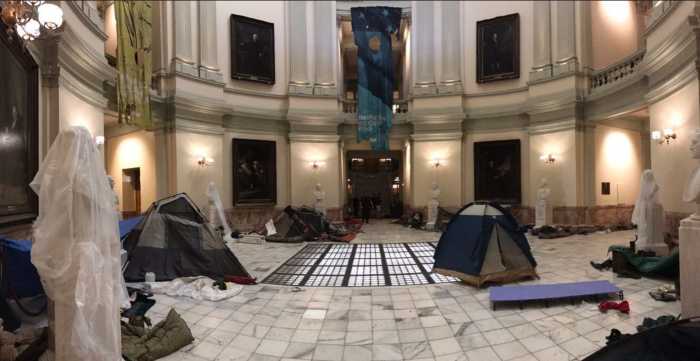
In post-apocalyptic films, there is usually a scene dedicated to the conservation of art and cultural objects—as if clinging onto objects of historical memory were an act of faith in a disappearing world. Those who survive the cataclysm see it as their duty to fight in a dystopic landscape, and their path is inflected by the question of what to do with the vestiges of civilization, these objects whose material fragility teeters between the past and the possibility of the future.
Even within the field of speculative fiction, it seems that the destiny of some artistic creations is to be disputed by a few people.
Generally speaking, the cognitive estrangement that feeds science fiction—and not just the science fiction of catastrophe—is delineated through tropes about the value of museological pieces. Such an affirmation seems to declare that even when life in all its many forms disappears from earth, cultural goods should be protected as aspects constitutive of memory, as contextualizing elements of the passage of time. In these dystopic stories, it is eco-genocide and exploitation, as well as fear, ideology, and socio-political conflict that are put into play. But the way in which works of art have been represented in the archetypes of apocalyptic cinematography has not changed much; they are almost always safeguarded by military agents and deranged dictators or subject to all manner of theft. Even within the field of speculative fiction, it seems that the destiny of some artistic creations is to be disputed by a few people. Likewise, many of the pieces in these movies belong to public collections; therefore, the narrative logic in these nightmares is such that, in the case of an emergency, the care of this public good must pass into the hands of a private collection, whether it be the claws of a totalitarian government or the grasp of eccentric individuals who are willing to risk their lives to protect valuable objects against climate change, alien invasion, pandemic, meteors, biological mutations, and volcanic eruption.
In these stories and films, the physical space of survival is generally the bunker, a place of privilege from which those who are able to consider the tragedy of tomorrow—rather than that of the everyday—can make decisions regarding their personal preservation. But the decontextualization of art objects is not a novel idea: many of the pieces which are housed in museums today arrived to these institutions as a result of previous acts of appropriation of other systems of knowledge. While necessary conversations about the value of public access and the restitution of pieces to their original contexts[1] have taken place over the last few years, the predictions of post-apocalyptic popular culture flow in exactly the opposite direction.
Another vector of analysis common to this genre builds off the idea of technological development: many of these films do not generate their cataclysmic imagery from deductive illusions, rather they collect information about what could actually happen based on real data. Hypothetical scenarios involving cities in flames and plant life creeping over the vestiges of what was once the stuff of everyday life draw on realistic predictions and variables that can be classified, measured, and designed using statistical models. The way destruction occurs in these stories is directly linked to what it was possible to imagine in the epoch of their creation; they are documents of our fears. Hence, the notion that these stories produce for us the tools for our survival; in the event that one of these calamities actually were to occur, one could simply recall the actions of whatever relevant hero in order to survive in the new scenario. It is in service of this sense of realism that museum works appearing in films of this nature are almost always iconic (from a Eurocentric view) and easily recognizable. These pieces help the audience to connect quickly and sensuously with a space that alludes to a familiar or known world. The history of human representation is a negotiation between the signs of early history and those which will appear at its end, an uninterrupted movement of meanings and reinterpretations. In a single scene, for example, a painting from the seventeenth century appears alongside a helmeted astronaut who traverses, indefatigable and carrying his oxygen tank, ruined landscapes, hoping to survive another day.
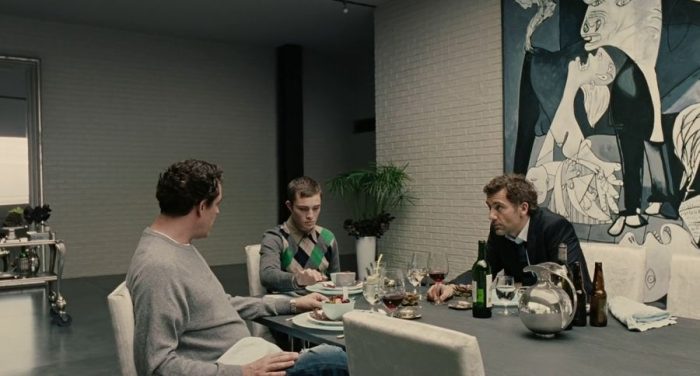
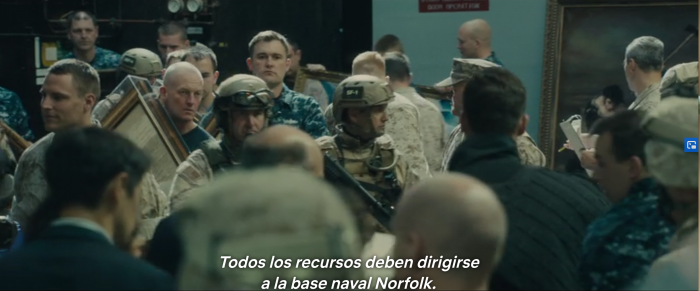
But reality moves faster. Like a lung expanding and contracting, our race against extinction seems to have reached new heights since the advent of COVID-19. After the hammer, the dance has become a lullaby of uncertainty.[2] The language of war is infecting us again, staining us with its rhetoric of inequality: only the strong will survive. Meanwhile, reality collides with fiction. As far as cultural heritage is concerned, there exist organizations, like the International Committee of the Blue Shield,[3] that—in an undeniable simulation of dystopic fantasies—are dedicated to the protection of cultural heritage. Blue Shield sent out a document in April 2020 entitled Closed by COVID-19? A Practice Guide for managers of heritage collections that are closed at short notice because of an epidemic or Pandemic, in which the committee assures, among other things, that people’s health should be prioritized over the preservation of cultural heritage, and divides its strategies into different sections with titles like “All Hands on Deck,” “Skeleton Staff,” and “Evacuation or Lockdown.” This organization, which functions according to colonial guidelines, has also taken upon itself the protection of languages, noting that 96 percent of world languages are at risk of being lost. In a strange but interesting turn, they create a parallel in their statement that, by cataloguing languages that have disappeared or which are no longer in use as extinct species, ends up questioning the hierarchy of animacy that relegates nonhuman lifeforms to the lowest ranks.[4] If language is thus a form of life, how can new relationships with supposedly inanimate cultural objects intoxicate categories of affect, connection, and access?
[…] social distance has been a conscious and central focus in the structuring of Western museums since their beginning, a distance organized along class, race, and gender. Now that the pandemic has brought the concept of social distance to the fore, perhaps it will be possible to examine dogmas and values that we thought were immutable.
A Visitor to a Museum (Посетитель музея)
In The End of Art and the Origin of the Museum,[5] Douglas Crimp reflects on the construction of the Western museum and how this entity ceded to the Hegelian ideology of state organization, definitively distancing itself from its critical tie to the present and divesting itself—even architectonically—of its role as a necessary part of life. Crimp claims that it is against this idea of the ideal museum that we must fight in so far as it constitutes yet another instance of the instrumentalization of the myth of the nation-state. This museum, the heir of the disciplines of archeology and natural history, identifies, classifies, catalogues, and orders objects in order to cement an aesthetic image of history, with all of its white, patriarchal, misogynistic, colonial, necropolitical, ableist implications, only sanctioning existence relative to this standard that admits no possibility of dissent or transformation. One could say that a lot has changed since he wrote this and that perhaps a kind of museum able to subvert the museological order does exist, embodied in the museum of contemporary art, whose importance lies precisely in its capacity to generate public debate—a product of the practice of institutional critique that artists have spearheaded for decades—about itself as an entity and the decisions it makes as an institution.
But we can also observe a direct line connecting the creation of the modern museum and current museums steeped in neoliberalism, spaces previously paralyzed by budgetary limitations and currently thrown into a state of confusion as a result of quarantine, whose expansion in the digital realm has only reinforced the idea of the consumed consumer and the disposable worker who can be laid off like an obsolete piece in the puzzle of subsistence. The horizontal dynamic between user and audience—the unwritten rule of the Internet—does not correspond to the verticality with which museums produce their digital content. Not only the format, but the rules of the equation need to be transformed. In the said context, the new regulations for reopening bring with them the horror of giving up the normalized idea of the museum, namely that the museum is a space designed for a few, to the past. The opening of exhibition spaces is contingent on the level of sterility institutions are able to achieve with safe social distancing and halls designed to circulate air and thoroughly disinfect. This means that rooms with pieces that cannot be exposed to disinfectants will remain closed. All free travel, the movement of bodies around an artwork, and installations will be prohibited, replaced by a systematized, guided approach. This isn’t a script, and this isn’t only happening in museums. Similar strategies are being implemented in all sorts of public spaces. This is apparently what has to happen while we wait for a viable vaccine or treatment.
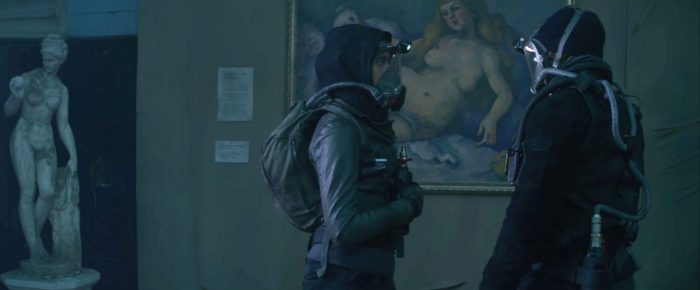
If Paul Valéry and Marcel Proust were to enter today’s sterilized museum, with its enforced distance, it is hard to imagine that they would become a part of the same quarantine pod, or maybe, as lovers, they would realize that history continues institutionalizing art objects by placing them in quarantine—that is to say, at a safe distance from contemporary tensions and contradictions.[6] But these doubts have also now translated into different scenarios. In the socially-distanced museum, at a time when vital responsibilities are centering around preservation and survival, the possibility of imagining a different kind of institutional structure emerges. As Crimp mentions, social distance has been a conscious and central focus in the structuring of Western museums since their beginning, a distance organized along class, race, and gender. Now that the pandemic has brought the concept of social distance to the fore, perhaps it will be possible to examine dogmas and values that we thought were immutable. Their potential modification is perhaps another means to decodify social, cultural, and political bias in hopes of imagining permeable organizations that are capable of being a refuge for all forms of life, for its ghosts and its microorganisms.
Planet of the Female Invaders
Returning to filmic dystopian fiction, it is fair to say that this genre is not only often deeply masculine, but also often decidedly misogynistic, binarist, and heteronormative. These specific qualities, fed by the figure of the hero, are at the very least curious in a genre in which female thought has been foundational and has helped shape forms of interspecies affect and agency with regards to trauma, death, pain, shame, loss, and emotions of impossibility. Representations of the mother goddess devouring her children, of the cruel female vampire, of radical suffragists, of the woman who dominates worlds, have accompanied this fiction in its endless nuances. Here, we can see that Susan Sontag’s essay “The Imagination of Disaster” (1966),[7] in which she suggests that the science fiction of catastrophe has been unable to perform any social critique, has been unsuccessful at imagining the future, the present, or the past. But beyond the aforementioned gendered limitations that do persist even today, there already existed numerous examples to the contrary when Sontag wrote that essay. Many of these were written by women writers who introduced their own experiences and problems into the narratives and were characterized by an undeniable desire for collective social transformation. For example, in 1666, Margaret Cavendish wrote The Blazing World, and many female pioneers in science fiction followed in her footsteps with novels like The Last Man (Mary Shelley, 1826), The Heads of Cerberus (Barrows Bennet, 1919), Metropolis (Thea Von Harbou, 1925), That Only a Mother (Judith Merril, 1948), Shadow on the hearth (Judith Merril, 1950), Minister Without Portfolio (Mildred Clingerman, 1951), The Children of the Atom (Wilmar Shiras, 1953), Captive Audience (Ann Warren Griffith, 1953), Planet Savers (Marion Zimmer Bradley, 1958), The Beast Master (Andre Norton, 1959), Day at the Beach (Carol Emshwiller, 1959), The Sioux Spaceman (Andre Norton, 1960), Memoirs of a Spacewoman (Naomi Mitchison, 1962), Sign of the Labrys (Margaret St. Clair, 1963), and Planet of Exile (Ursula K. Le Guin, 1966). And these, in turn, would be followed in the years to come by works by Joanna Russ, Octavia Butler, Laura Bynum, Nalo Hopkinson, and many more.
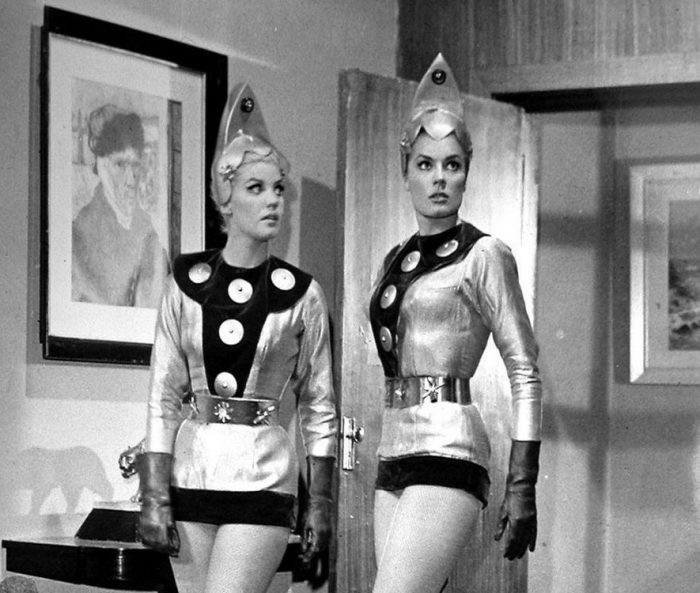
Contrary to what Sontag predicted about readers’ limited interest in the genre, dystopic fantasy has only grown. If science fiction films aim to give testiment to human trauma and, in some way, try to control it, this project never comes to an end because the traumas and fears become real. This apocalyptic relationship to current issues, which include, above all, ecological collapse through deforestation, climate change, drought, pesticides, viruses, bacteria, and neoliberal policies, represents an intersection that is already present in the ecofeminist reflections that arose alongside the science fiction stories of the seventies. Beyond ecological activism, the new interrogators who emerged on the scene were also interested in the representation of authority and the question of who controls the production of knowledge (as well as the above mentioned connection between the museum and the white, heterosexual man). It is in this way that the knowledge amassed by indigenous, peasant, female, Latinx, Afro, functionally diverse—to mention just a few of the communities that have been systematically excluded from and obliterated and sidelined by our “normative” culture—return, in the form of the Futurisms of speculative fiction, to modify the structures currently enforced. As much in literature and cinema as in public monuments and museums, this knowledge embedded in visionary fiction radically has the ability to transform their contexts through experience and re-readings that generate their own images that represent nothing more than a crisis of possibility in an attempt to comprehend; they have less to do with the future than with the present.
IO
Up in the trees, among the leaves that have survived in the post-apocalyptic ruins, there live little insects and organisms. Lyman Tower Sargant would call these existences critical dystopias—vulnerable communities rendered even more vulnerable, but in which exist the possibility for a future distinct from the one offered to us by conservative governments, the decoy utopia of neoliberal, reformist promises, forever corporate with no alternatives.
Preliminary tasks of our algorithm. All hands on deck in the capitalism of platforms. Make sure the protocols are fulfilling the disaster plan’s requirement for emotional connection. We aren’t exaggerating, it is our bodies that are at risk.
Sarapiquí left their house and walked four days until they reached the forest. It is said they went to die with their people. Use all your meanings, inside and out. How will we access the future? Defending what we built in the face of public and private crisis. Health safety protocols with globally underfunded health.
Perhaps we’ll live to see the dawn.
—
This text was translated from Spanish to English by Chloe Wilcox.
One of the most recent examples of this occurred in early July 2020, when the Los Angeles County Museum returned four Buddhist paintingsl, which had been stolen by US troops in 1954 during the Korean War, to South Korea.
This phrase refers to a popular article by Tomás Pueyo, entitled “El martillo y la danza” or “The Hammer and the Dance” in which he argues for a two-pronged approach to containing COVID-19. The first of these (the hammer) involves a serious and strict implementation of containment strategies to flatten the curve. The “dance” refers to the equilibrium society will have to strike between their desire to return to normal life and the need to continue to follow safety protocols to prevent a resurgence in cases. (Translator’s note).
In 1996, four organizations, the ICA, ICOM, ICOMOS, and IFLA, founded the International Committee of the Blue Shield, the equivalent of the Red Cross for the culture sector. It was charged with “the protection of the world’s cultural property and is concerned with the protection of cultural and natural heritage, tangible and intangible, in the event of armed conflict, natural- and human-made disaster.” (Article 2.1, Statues of the Blue Shield, 2016).
Mel Y. Chen, Animacies: Biopolitics, Racial Mattering, and Queer Affect (Durham, NC: Duke University Press, 2012), 23.
Douglas Crimp, “The End of Art and the Origin of the Museum,” Art Journal 46, no. 4 The Political Unconscious in Nineteenth-Century Art (1987): 261-266.
Catherine Lui, “Art Escapes Criticism, or Adorno’s Museum” Cultural Critique 60 (Spring 2005): 217-244.
Comments
There are no coments available.